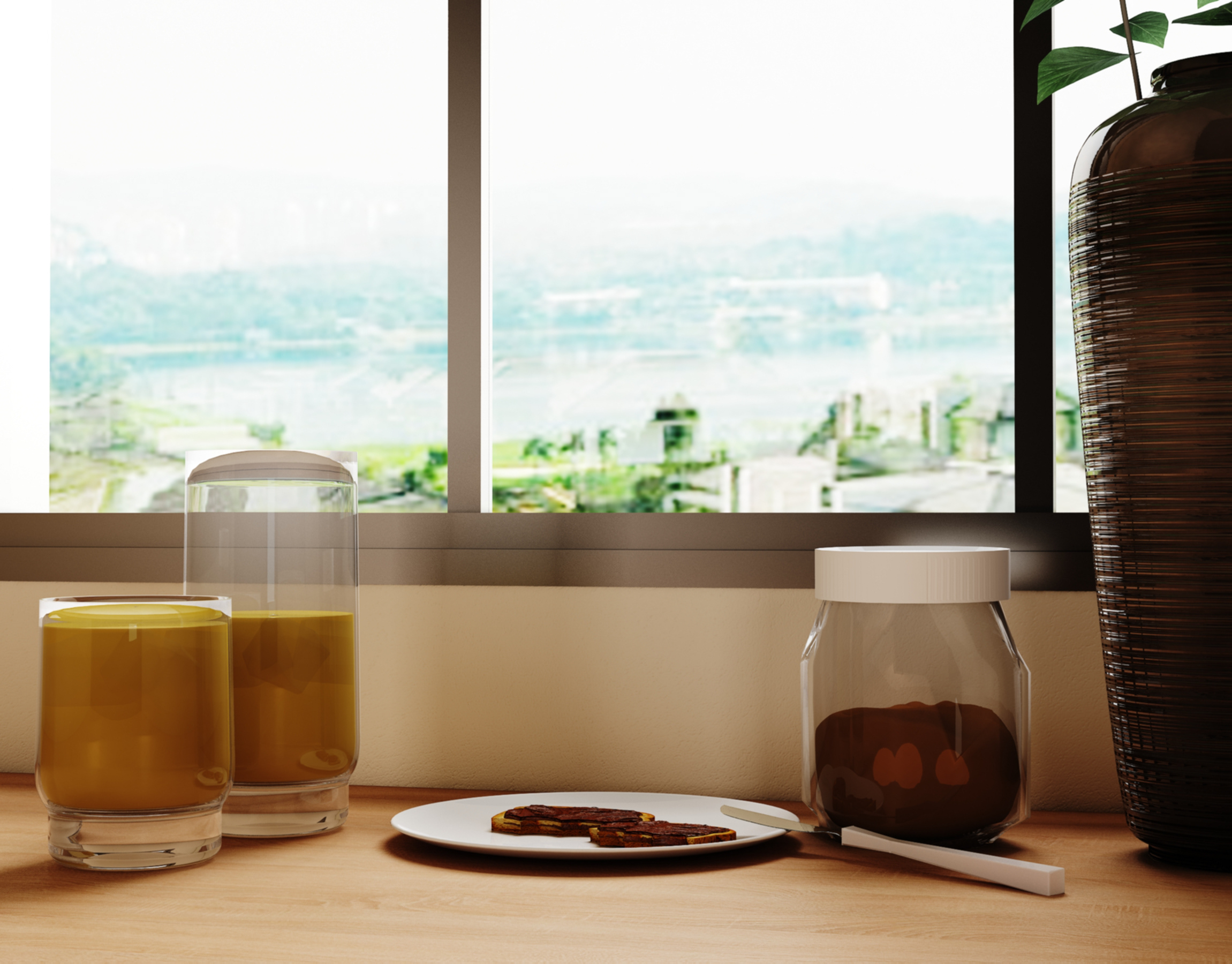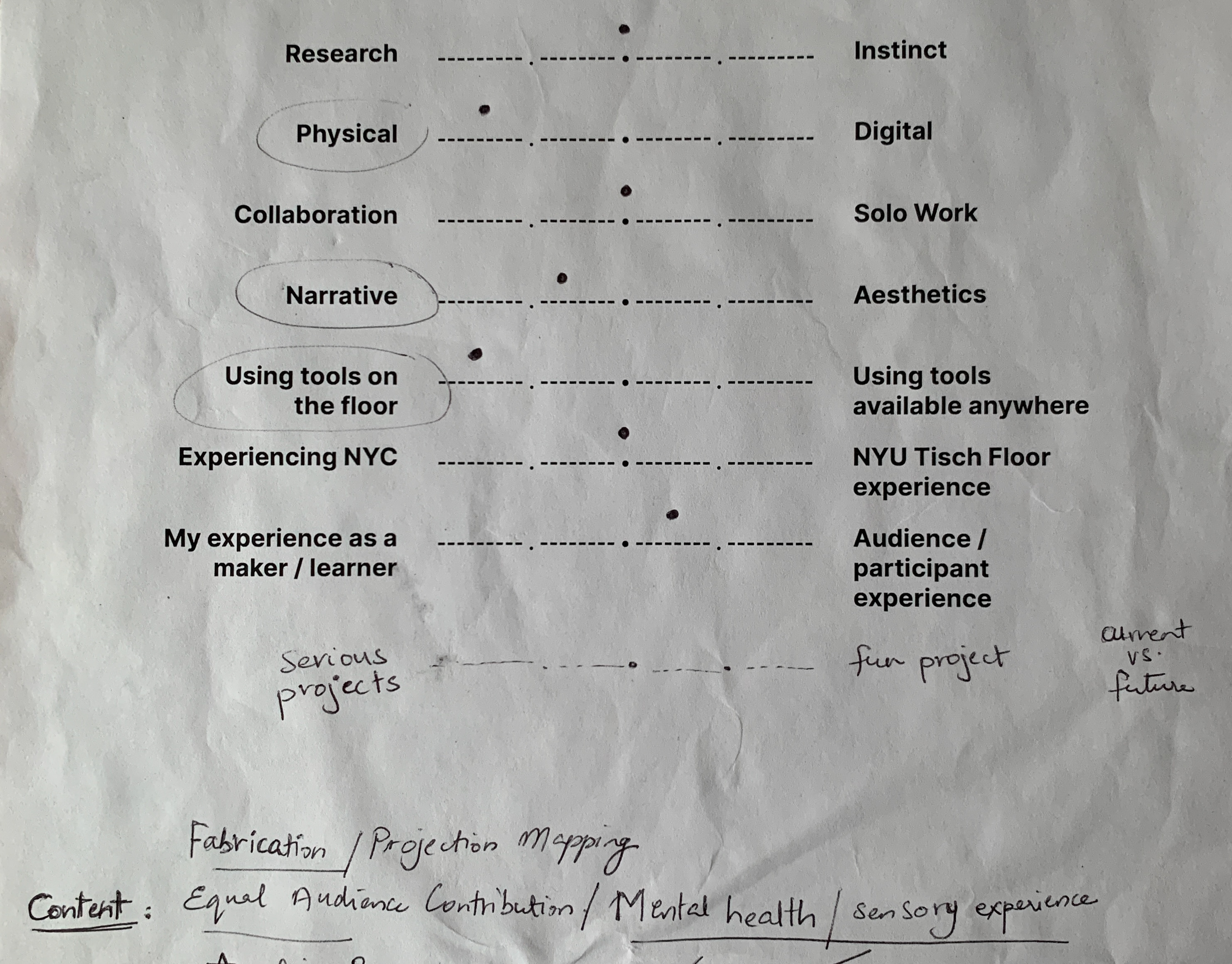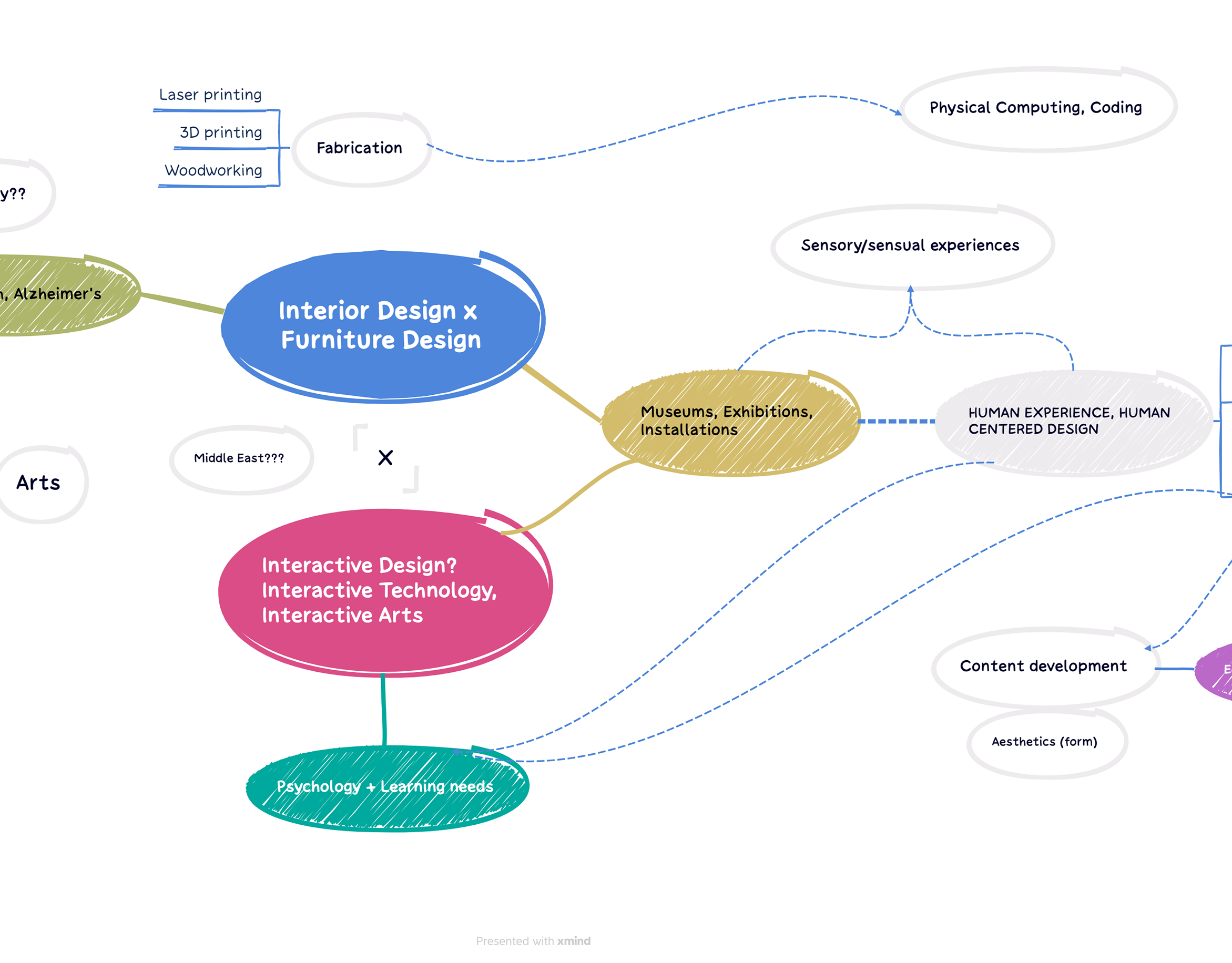The gift I brought:
My gift was my undergrad thesis - an interior design project, called 'Oblivion Space Exploration Centre'. The high-tech centre was designed as an enhanced interactive environment that serves as an education and entertainment centre, and delivers space-related knowledge through the application of the ‘Motivation Theory’ (an edutainment cognitive theory) to the interiors of the centre.
Re-engagement with gift:
Upon receiving Rebecca's gift to me (which was a sketch of a child being 'enlightened' by outer space and its planets), I was instantly reminded me of a memory I hold dear to me. My home country, for which this space exploration centre was designed for, showed very little interest in outer space. When I got to display this very same project at an exhibition, I had just started to learn how to render interiors in VR, and had rendered a few scenes from the space exploration centre to be viewed by a VR headset during the exhibition. A particular curious visitor was so mesmerized by the scenes I rendered, he would not put the VR headset down. He was a little boy who genuinely enjoyed my static first-try VR scenes, mostly because opportunities revolving around outer-space are quite limited in my home country. Little did he know, he made my day. I felt accomplished because the sole purpose behind my project was to instigate curiosity, exploration and wonder for outer space, especially for the younger generations. Rebecca's response to my gift reminded me of that purpose.
Chosen Medium & Surprises:
I chose to use Touch Designer for this project, because I found it an interesting tool when I was introduced to it last year at ITP Camp. I am more interested with the possibilities of what I can make with this software. I went about learning it by watching several online tutorials and reading forums for debugging any problems I came across. A lot of it was also trial and error, based on what I watched or read. I went about with this learning approach because I wanted to learn how to do specific tasks to at least achieve a prototype of my vision. I was surprised by how indirect the operators were to use, but made some sense to me once I figured out how to use them. I was also surprised by the limitation I had with the resolution of the final product due to having a non-commercial key for the software. Additionally, for a software that deals a lot with visuals, it does not have a straightforward way to creating VR, unlike other programs I have worked on.
What I made:
My approach to this was project was half form-based, half content-based. Form-based because my choice of medium was independent of other factors. Content-based because my very first tries with VR on that exhibition day were static and lacked any animation, so I decided to create a 360 animated video (which could translate into VR with further processing) of the Moon's rotation around Earth. I wanted to create a video that would have been received positively by the little boy who was curious about outer-space.
Animated video in 2D
Examples of failed 360 animation video exporting
Documentation of my journey on Touch Designer and references can be found here.
What I would do differently or add if I had more time:
1. I would try to figure out a solution to increasing the resolution of the exported video, (especially for a cube map render).
2. I would try to make it more interactive and dynamic. Interactive perhaps in a way that it can switch from the Earth & Moon view to the Solar System or galaxy view, or maybe even switch to different outer space phenomena based on a specific interaction. Dynamic in a way where I can move where my actual position is in the VR environment, rather than being in one position.
3. I would try to make it more realistic by adding lights/shadows that are physically accurate.
4. I would like to add instrumental music




